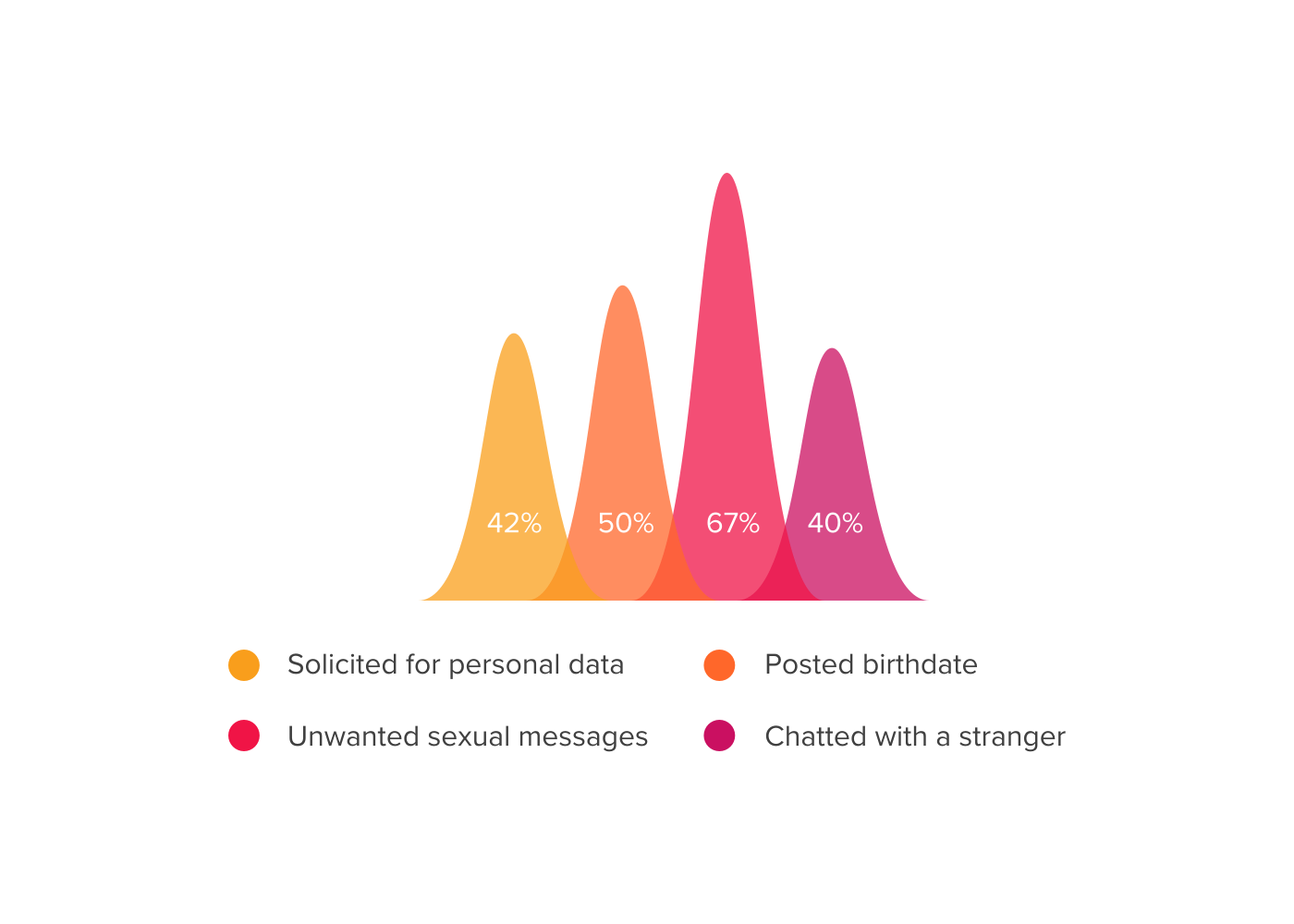Tell the Bully to Stop
It’s probably obvious to the perpetrator that their contact is unwanted, but it’s still important to tell the bully to stop. It helps establish a case if law enforcement becomes involved.


When the internet was connected only to stationary desktops, monitoring kids’ activity on the web was relatively easy. Now, teens have access to always-on internet connections that are tucked into their back pockets and move with them wherever they go.
The internet helps teens learn, entertain themselves, and connect to their peers, but being constantly online also poses many risks. In this guide, we'll give you tips, techniques, and advice about how to protect your teen from online threats like fraud, identity theft, and cyberbullying and empower them to interact safely online.

According to the Pew Research Center’s 2018 report on Teens, Social Media & Technology,¹ 95% of American teens (ages 13–17) have a smartphone or have access to one. About 90% say they’re online either “almost constantly” or several times a day, and they spend much of that time on social media apps, primarily Instagram, Snapchat, and YouTube.
American teens are divided on how internet culture and social media affect their lives; 31% say it has a mostly positive effect and 24% say it has a mostly negative effect. But teens unite on what stands in the way of online safety—primarily cyberbullying—and show interest in getting help with the problem. In fact, the majority of teens (59%) see parents as not only influential but also more effective than other leaders in addressing cyberbullying.²
That’s great news for you parents. Your teen might be more receptive to conversations about internet safety, with you, than you think. Take heart, and share these statistics and tips with your teen so they can confidently navigate their online life.

The internet is social by nature. Just like adults, teens tend to use social media to share details about themselves and their lives. But sharing too much personal information, or not being careful about who can view that information, leaves teens vulnerable to dangers from identity theft to sexual abuse to abduction in extreme cases.
Despite a growing awareness of cyberbullying, it remains common among teens. Pew Research finds that 59% of teens⁸ have experienced cyberbullying, including but not limited to being called offensive names, having false rumors spread about them, receiving explicit images, or being threatened physically. Review these techniques to help reduce the damage of cyberbullying.
It’s probably obvious to the perpetrator that their contact is unwanted, but it’s still important to tell the bully to stop. It helps establish a case if law enforcement becomes involved.
Hopefully, telling the cyberbully to stop will put an end to your teen’s trouble. But, in case it worsens, it’s a good idea to capture all cyberbullying contact with screenshots.
Nearly every social media network and email platform offers a blocking feature. Your teen can block the cyberbully and report them to the service the bully is using to harass them.
Be sure your teen knows you won’t stand for cyberbullying under any circumstances. Encourage them to respect their peers whether they’re in class or commenting on Instagram.
Criminals use information teens post on social media to steal identities and make sexual advances, while teens cyberbully, tease, and even expose risqué images of each other. Now is the time to have an important conversation with your teen about social media, including what’s appropriate and how they can protect themselves online. Use these six tips to get started.
Talk with your teen about what you believe is appropriate social media behavior and set well-defined boundaries about what is acceptable to post on social media sites and what isn’t. Establish clear consequences, and enforce them when needed.
For the best chances of online safety, have your teen set their social media profiles to private. If you’re okay with your teen occasionally sharing publicly, make sure those posts share as little personal information (including selfies) as possible.
Your teen’s social media profile becomes less private the wider their circle is. Remind your teen that accepting follows from people they don’t know is risky, and encourage them to reject requests from people they don’t know and trust.
Tell your teen to think before they post, comment, or DM someone. Encourage them to share only what they’re comfortable with, and remind them to protect private information like passwords, phone numbers, and email addresses.
Remind your teen that when they post to social media, others can see and reuse their comments, pictures, and videos however they want, even if they shouldn’t. Even private messages and pictures can go viral with just a few clicks.
Remind your teen that they have a responsibility to behave ethically toward other internet users. If they want the internet to be a safe place, they can contribute by participating in all that’s good online and helping peers do the same.

We hope this guide has been useful for starting a conversation with your teen about online safety. Working together, we can help teens in our homes, schools, and communities stay safe.
Help educate others and share this guide!